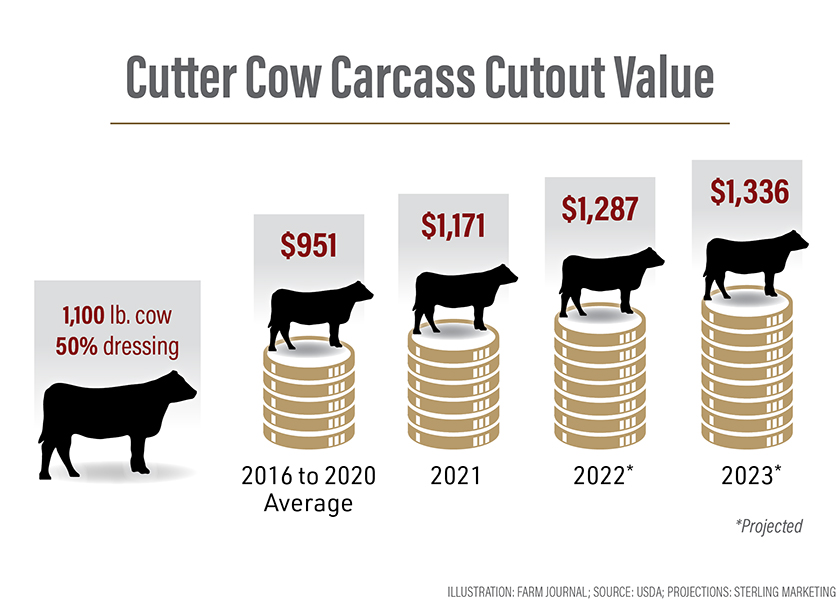The Great Cow Roundup

American ranchers are culling their herds at a torrid pace. Through mid-April, beef cow slaughter was 16% higher than the previous year, the highest increase since 1986. That’s on top of annual beef cow slaughter that was up 10% in 2021 and 2% higher in 2020.
Rapid, unseasonal herd liquidation has been forced on ranchers by a perfect storm of widespread drought, meager profit margins, rising feed and operating costs, and surprisingly high prices for cutter cows. The result is a shrinking factory for calf production that some stakeholders see as alarming.

At its current pace the annual culling rate would reach 13.8%, resulting in a decrease in the beef cow herd by 4% on Jan. 1, 2023, says Derrell Peel, Oklahoma State University livestock economist.
“That would drop the total inventory below 29 million head, the largest annual beef cow herd decline since the mid-1980s,” Peel said.
While it’s unlikely that beef cow slaughter will continue at such a rapid pace, Peel says a significant decline in the feeder cattle supply is already baked into the numbers. For instance, if beef cow slaughter were to equal last year’s total of a 9% decline, cow slaughter would just need to increase 6.1% higher the rest of 2022.
“That level of decrease in the slaughter rate, from the current 16.9%, seems unlikely at this point,” Peel says. “But in this case, the net herd culling rate would be just under 13% – though still a record level – and the 2023 beef cow herd could be roughly 29.2 million head, down about three percent year-over-year.”
The U.S. inventory of beef cows began the year with just 1.04 million more cows than the 2014 drought-induced low of 29.085 million. That was the smallest beef cow herd since 1952, and the result was a tight supply of feeder cattle and calves that produced record high prices for both yearlings and fed cattle.

While ranchers will welcome the higher prices that are almost a certainty this fall, several factors have created a much different landscape than seen during those gaudy days of 2014. Rising costs for fuel, grain and other inputs are expected to add $75 to the cost of producing a calf this year, according to USDA estimates. Feedlot operators are also experiencing higher costs and estimates suggest the packing industry sees labor costs at least 25% higher than in 2014.
Yet, the impact on beef production may be somewhat muted.
“We are more productive that we were in 2014,” says University of Missouri economist Scott Brown. “Slaughter won’t go back to 2014 levels, which was about 115,000 head per day. I project that daily slaughter average will be closer to 125,000 head per day in 2024, which is about 10,000 head per day less than what we saw in 2021.”
The growing use of beef-on-dairy will also impact the feeder cattle supply to some degree over the next few years, further minimizing the impact of the smaller beef cow inventory.







